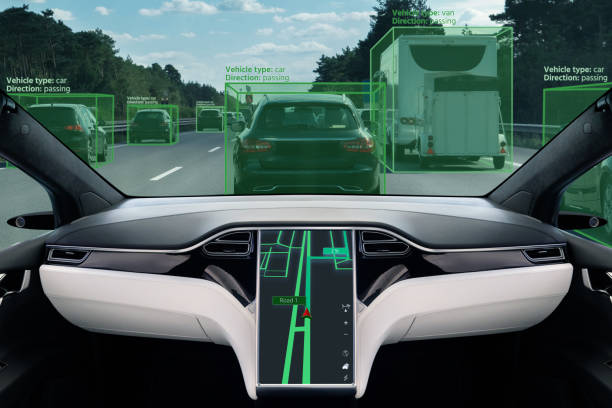Telematics: Revolutionizing Vehicle Connectivity and Safety
In an era of rapid technological advancement, telematics has emerged as a game-changing force in the automotive industry. This sophisticated blend of telecommunications and informatics is transforming how vehicles communicate, operate, and interact with their environment. From enhancing driver safety to optimizing fleet management, telematics is paving the way for a more connected and efficient transportation ecosystem.

The 1990s saw the introduction of GPS-based navigation systems in vehicles, marking a significant milestone in telematics history. This period also witnessed the emergence of automatic crash notification systems, which could alert emergency services in the event of an accident. As we entered the 21st century, telematics began to integrate more sophisticated sensors and communication protocols, enabling real-time vehicle monitoring and data analytics.
Core Components of Modern Telematics Systems
At the heart of any telematics system lies a complex network of hardware and software components working in harmony. The primary hardware element is the telematics control unit (TCU), which serves as the brain of the system. This device collects data from various sensors throughout the vehicle, processes this information, and transmits it to a central server or cloud platform.
Complementing the TCU are an array of sensors that monitor everything from engine performance and fuel consumption to tire pressure and driver behavior. GPS receivers provide precise location data, while cellular modems facilitate data transmission. On the software side, sophisticated algorithms analyze the collected data, generating actionable insights and triggering automated responses when necessary.
Enhancing Vehicle Safety and Performance
One of the most significant impacts of telematics has been in the realm of vehicle safety. Advanced telematics systems can detect potential mechanical issues before they become critical, alerting drivers and maintenance teams to schedule preventive repairs. This proactive approach not only extends vehicle lifespan but also significantly reduces the risk of accidents due to mechanical failure.
Telematics also plays a crucial role in improving driver behavior. By monitoring factors such as speed, acceleration, braking patterns, and cornering, these systems can provide real-time feedback to drivers, encouraging safer driving habits. Many insurance companies now offer usage-based insurance policies that leverage telematics data to reward safe drivers with lower premiums, creating a financial incentive for responsible driving.
Revolutionizing Fleet Management
For businesses operating vehicle fleets, telematics has been nothing short of revolutionary. Fleet managers can now track their entire fleet in real-time, optimizing routes, reducing fuel consumption, and improving overall efficiency. Telematics systems provide detailed insights into driver performance, vehicle utilization, and maintenance needs, enabling data-driven decision-making and significant cost savings.
Moreover, telematics has greatly enhanced fleet security. Geofencing capabilities allow managers to set virtual boundaries for their vehicles, receiving alerts if a vehicle leaves its designated area. In the event of theft, telematics systems can assist in quick vehicle recovery by providing real-time location data to law enforcement agencies.
The Role of Telematics in Vehicle-to-Everything (V2X) Communication
As we move towards an era of connected and autonomous vehicles, telematics is playing a pivotal role in enabling Vehicle-to-Everything (V2X) communication. This technology allows vehicles to communicate not only with each other but also with infrastructure, pedestrians, and the broader Internet of Things ecosystem.
V2X communication, powered by telematics, has the potential to dramatically reduce traffic congestion and accidents. Vehicles can share real-time information about road conditions, traffic flow, and potential hazards, allowing for more informed decision-making by both human drivers and autonomous systems. This interconnected network of vehicles and infrastructure lays the groundwork for smart cities and more efficient transportation systems.
Challenges and Future Prospects
Despite its numerous benefits, the widespread adoption of telematics faces several challenges. Privacy concerns are at the forefront, as telematics systems collect vast amounts of potentially sensitive data about vehicle and driver behavior. Striking a balance between data utilization and privacy protection remains a critical challenge for the industry.
Cybersecurity is another significant concern. As vehicles become more connected, they also become potential targets for cyberattacks. Ensuring the security of telematics systems and the data they transmit is paramount to maintaining public trust and preventing potentially catastrophic breaches.
Looking ahead, the future of telematics is closely intertwined with advancements in artificial intelligence and machine learning. These technologies will enable even more sophisticated data analysis, predictive maintenance, and autonomous decision-making capabilities. As 5G networks become more prevalent, the increased bandwidth and reduced latency will unlock new possibilities for real-time data processing and communication.
In conclusion, telematics stands at the forefront of automotive innovation, driving us towards a future of safer, more efficient, and increasingly connected transportation. As this technology continues to evolve, it promises to reshape not just how we drive, but how we conceptualize mobility in the 21st century.





